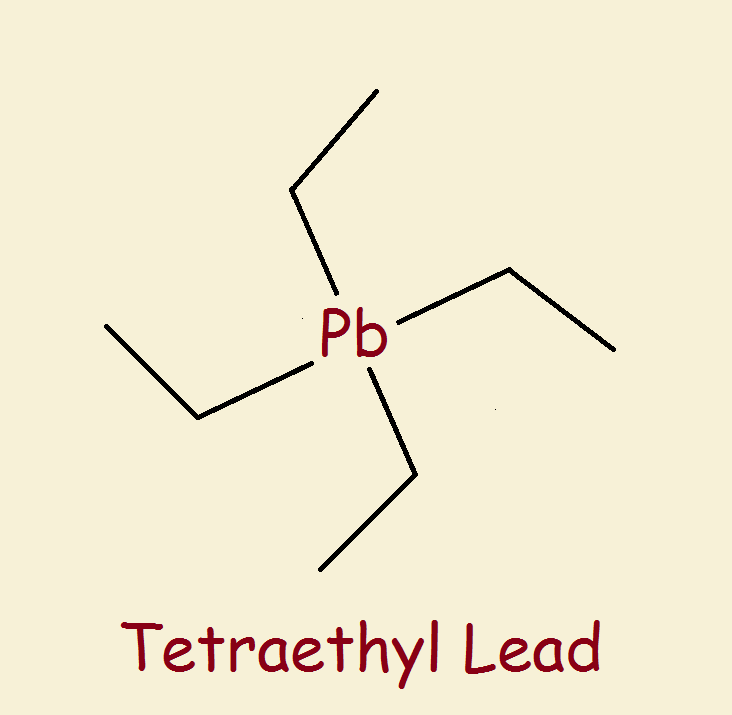
What’s special about leaded gas? And since it was eliminated, are there health issues in the environment because of it?
For more than fifty years, internal combustion engines such as automobile engines have used a high compression ratio.” This means gas mixed with air, by carburetion or injection, has been severely squeezed by pistons in cylinders. Spark was then applied, igniting the mixture. This was done to increase power and save money.
Enter Leaded Gas
In order to prevent pre-ignition, one or more octane improving agents was added to the fuel. The most common of these, used since about 1924, was tetraethyl lead, (C₂H₅)₄Pb.
Later, low compression engines became the standard, which minimized the need for octane improvement. This was because of recognizing that leaded gas poses major health issues. As a result, leaded gas has nearly disappeared.
Before that, what were the products of internal engine combustion? What happened to the lead? Where did it go? Ideally, combustion should be clean. Combustion products—gases discharged into the atmosphere via the muffler—should consist of carbon dioxide and water.
Not Lead Alone
Ideal is never real. Gasoline was formulated with extra additives. Nitrogen base detergents were added to keep engine parts, such as cylinder walls and pistons, free of carbon deposits. Burning these produced nitrogen oxides. Still another departure from ideal combustion resulted from sulfur, giving sulfur dioxide. Nitrogen oxides plus sulfur oxides produce acid rain!
Add to this the fact that combustion is rarely complete, so some of what should have been carbon dioxide was, instead, in carbon monoxide, CO. Then, too, where did the lead go, since most of it did not coat combustion cylinder walls, piston surfaces, or spark plugs? It too escaped to the atmosphere. What about after that?
Wonder Where the Lead Went?
Persons in the vicinity of exhaust fumes inhaled them. Also lead compounds settled out into the surrounding soil. Studies have shown that since the removal of lead from gas, the general populace has experienced a lower blood lead level, combined with a significantly improved intelligence quotient.1
Is Lead Currently a Problem?
Finally, it has been found that lead is stored in the bones. Whenever calcium is released from the bones, as in the case of a nursing mother, lead is released along with it.
Surprisingly, lead from paint is considered to be less of a problem to the human organism than lead from soil.2 Humans continue to suffer from the follies of burning leaded gas in the 20th century.
1 Amherst College: “Environmental Policy as Social Policy? The Impact of Childhood Lead Exposure on Crime,” by Jessica Wolpaw Reyes.
2 NIH: Soil is an important pathway of human lead exposure.
Note: Compare this article on mercury exposure: What Drove Russian Tsar Ivan the Terrible Mad?
References: